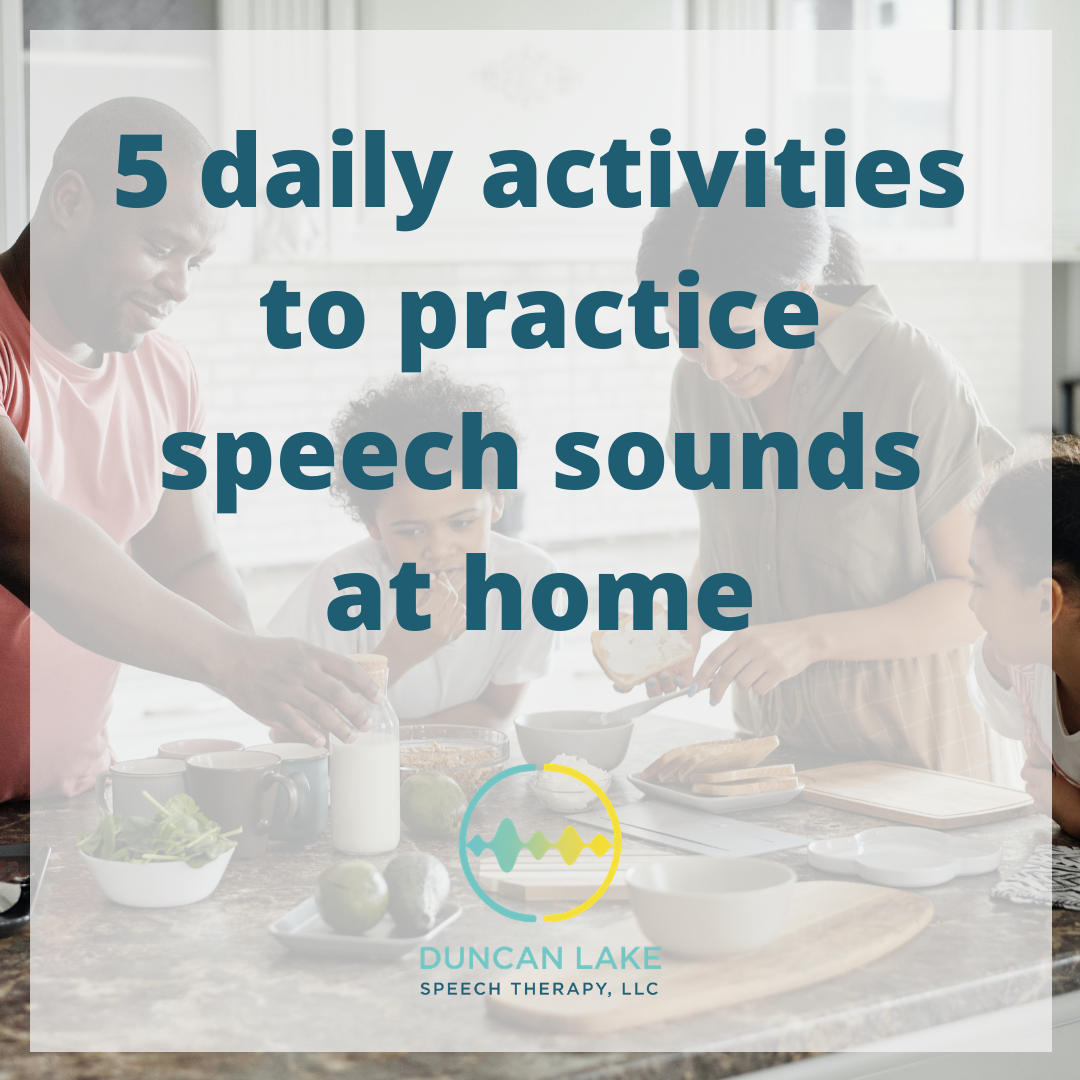If you are a parent of a child with an articulation disorder, it can be really tricky to find time to incorporate practice into your day. Your SLP likely sends you homework, but sometimes it’s hard to sit down and do “speech homework.” Luckily, you can really practice speech sounds in almost any activity in your daily routines! Let’s talk about this.
Just a few things before we begin. First, just know that you don’t need to practice speech sounds ALL. THE. TIME. Pick a 10-15 minute block of time and practice very mindfully. After that, let it go. Constantly correcting your child can create an aversion to speech in general, and it’s not fun for you as their caretaker! Second, intentional modeling IS practice. If your child has a lot of resistance to practicing speech sounds (which happens), take the pressure off of the situation and model it yourself. Over model! Draw attention to your face while you model! Never underestimate the power of modeling correct production. Third, you know your child. If you’re finding that they’re completely over the activity or your input, use your judgment as to whether or not to continue.

Here are some everyday activities that you can use to practice speech sounds:
Reading
I actually wrote an entire post about this a while back, but I’ll tell you what – reading is probably the easiest and most logical activity to use for speech practice. So, it’s worth repeating. Have your child pick out words with their target sound in it as you read. You can either have them practice the words while they’re reading, at the end of the page, or have them write them down to practice when you’re done. If they’re working on sounds in longer strings of speech, have them monitor their own sounds while they read.
Mealtime
Basically, I love using mealtimes for any speech activity. “Why?” you ask. Listen, if there’s food involved, kids are going to pay attention to what’s happening. This is a golden opportunity to practice a variety of speech and language skills because they are engaged. While they’re having a conversation, just let them know that it’s time to focus on fill-in-the-blank sound. Gently correct when needed. If conversation lulls, talk about food you’re eating with their speech sound in it. Practice and model.
…just, uh…watch out for flying food.
TV/YouTube-time
This might not be the best activity for kiddos who are still at the beginning stages of their speech journey. However, for children who are working on practicing their speech sounds in conversation or longer speech activities, TV is powerful! If your child has a favorite TV show or YouTube channel, have them summarize it when they’re done watching it. Make sure to tell them to use their best speech sounds while they do it, though. Have them monitor themselves, or give correction as needed. You can also ask them to write a story about the characters or their adventures. I absolutely love this strategy for kids nearing the end of their speech journey!
Zoom/FaceTime Calls
We are in a pandemic, people. This means that we’re still doing a lot of video calls. Enlist the help of your friends and family who consistently speak with your child on Zoom or FaceTime. Have them practice words with your little one. Sometimes, having someone else besides their regular caretaker practice with them can be a good motivator. You might need to set this up in advance, so make sure you communicate with your conversation partners. Send over some words, or have them really intentionally model the sounds.
Car Rides
There is nothing exactly unique about a car ride that makes it more or less effective than any other activity listed above. What makes it special, though, is that it’s finite – there is a definitive beginning and end. Set up a routine in which car rides to certain places are the time in which you practice. Perhaps you can make your drive to school or to the grocery store the time you practice. Whenever it is, use that time to hunker down and practice. Have a sheet of words for your kiddo to read or find objects on your ride that have your child’s sound in them. When the ride is over, speech practice is over. It makes it very do-able for kids who struggle with not knowing when speech activities will end.
Can you think of any other activities that might work well for practicing speech sounds? Comment below!



Recent Comments